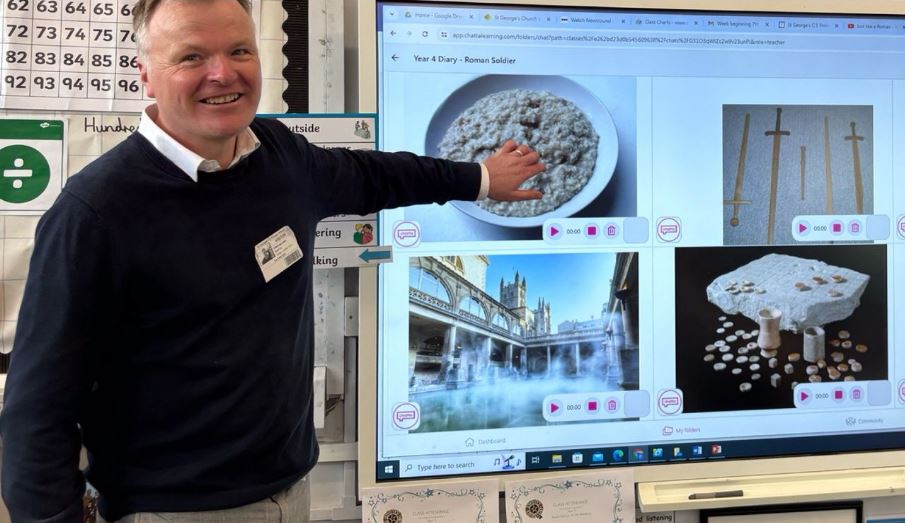
Chris Williams, a teacher from Yorkshire with twenty years of experience, quietly unveiled a teaching tool that has revolutionized the way kids learn to write, speak, and think. The tool, called Chatta, was inspired by a question posed in frustration and hope: “There must be a better way of doing this.” It did not originate from a lab or corporate research team.
Chatta creates a bridge between thought and expression by utilizing oral language rehearsal and audio-visual storytelling. The approach, which avoids rote memorization and instead mimics how the human brain naturally organizes, stores, and retrieves information, is especially novel in its design. Because of its compatibility with cognitive science, Chatta is incredibly effective at assisting students of all skill levels.
Chris Williams – Bio and Professional Background
| Attribute | Details |
|---|---|
| Full Name | Chris Williams |
| Occupation | Educator, Founder of Chatta |
| Specialization | Inclusive education, oracy, literacy, special educational needs |
| Based In | Kingston upon Hull, England |
| Education | University of Birmingham (Adv. Cert Autism), University of Hull (Adv. Diploma Special Ed.) |
| Known For | Co-founding Chatta, developing the oral narrative learning model |
| Years Active | 20+ years in education, founded Chatta in 2018 |
| Website | www.chattalearning.com |
| Recognition | Featured in HundrED Global Collection, BETT exhibitor, SHINE Trust grant recipient |
| Social Impact | Taught 40,000 students across 16 countries; raised £20,000 for charity |
When Williams first started teaching, he faced a common problem: pupils who had trouble expressing themselves also had trouble writing. Following Ed-tech expert David Andrews’ recommendation, Williams started developing a learning protocol that emphasized spoken language and imagery. This developed into Chatta, a technique driven by dialogue, introspection, and sequencing rather than requiring costly hardware.
Chatta has become particularly important in the last ten years for helping students who struggle with memory processing, autism, or dyslexia. Chatta seamlessly incorporates these students into whole-class instruction rather than isolating them through interventions. For kids who are just learning English, the method is especially helpful because oracy serves as a springboard for understanding and academic confidence.
Chatta-using classrooms have provided overwhelmingly positive feedback. Even the most reticent students now participate enthusiastically, according to teachers. Once a dreaded chore, writing now flows naturally from verbal storytelling. After only two weeks of exposure to Chatta, a girl who had previously been nonverbal at a school in Hull started speaking complete sentences. This is one remarkable example.
Chris Williams was able to implement Chatta in 50 new schools in Hull, West Yorkshire, Liverpool, and Newcastle by 2024 with the help of a £97,000 grant from SHINE Trust. School administrators regularly referred to Chatta as “transformational” and “exceptionally clear” in its effects during that rollout. It turned out to be a very flexible approach that could be applied to any subject, age group, or learning goal.
Williams has expanded Chatta’s reach internationally in recent years, giving presentations at conferences on education in Asia, the US, and Europe. He was able to instruct more than 40,000 students from 16 different countries in a single virtual session at one event. The initiative’s purpose-driven mission was further demonstrated by the noteworthy £20,000 it raised for children’s charities.
Chatta’s simplicity is what makes it so beautiful. It cultivates a child’s inner voice through image-supported sequencing, oral rehearsal, and modeled language. Writing then turns into a means of self-expression as well as an academic necessity. Students eventually develop into bold, resilient writers—a term that the schools that have adopted Chatta proudly use.
Teachers report a significant reduction in planning time when the approach is integrated with regular instruction. One head teacher likened the change to switching from a two-wheel drive to a four-wheel turbocharged vehicle. The change is emotional as well as pedagogical. As students start to hear themselves succeed, their social interaction, confidence, and self-esteem significantly improve.
Chatta is more than just a method. It is a reaction to the growing disparities in educational equity. Chatta has emerged as a surprisingly inexpensive equalizer in classrooms where speech and writing deficiencies have long existed, especially in underserved communities. The system’s capacity to support students at the early childhood and secondary levels using the same set of principles makes it especially innovative.
Chatta’s flexibility proved to be invaluable during the pandemic, when teachers and families faced unprecedented demands due to remote learning. Learning could proceed with clarity and structure thanks to its audio-visual platform and user-friendly lesson design. Even in virtual sessions, there was a noticeable increase in student engagement.
Chatta is starting to have an impact on practice and policy outside of the classroom. Following Williams’ demonstration during Helsinki Education Week, Finnish education officials started implementing Chatta in several kindergartens. Teachers shared heartwarming stories of students’ breakthroughs in the initial pilot reports, which were encouraging.
